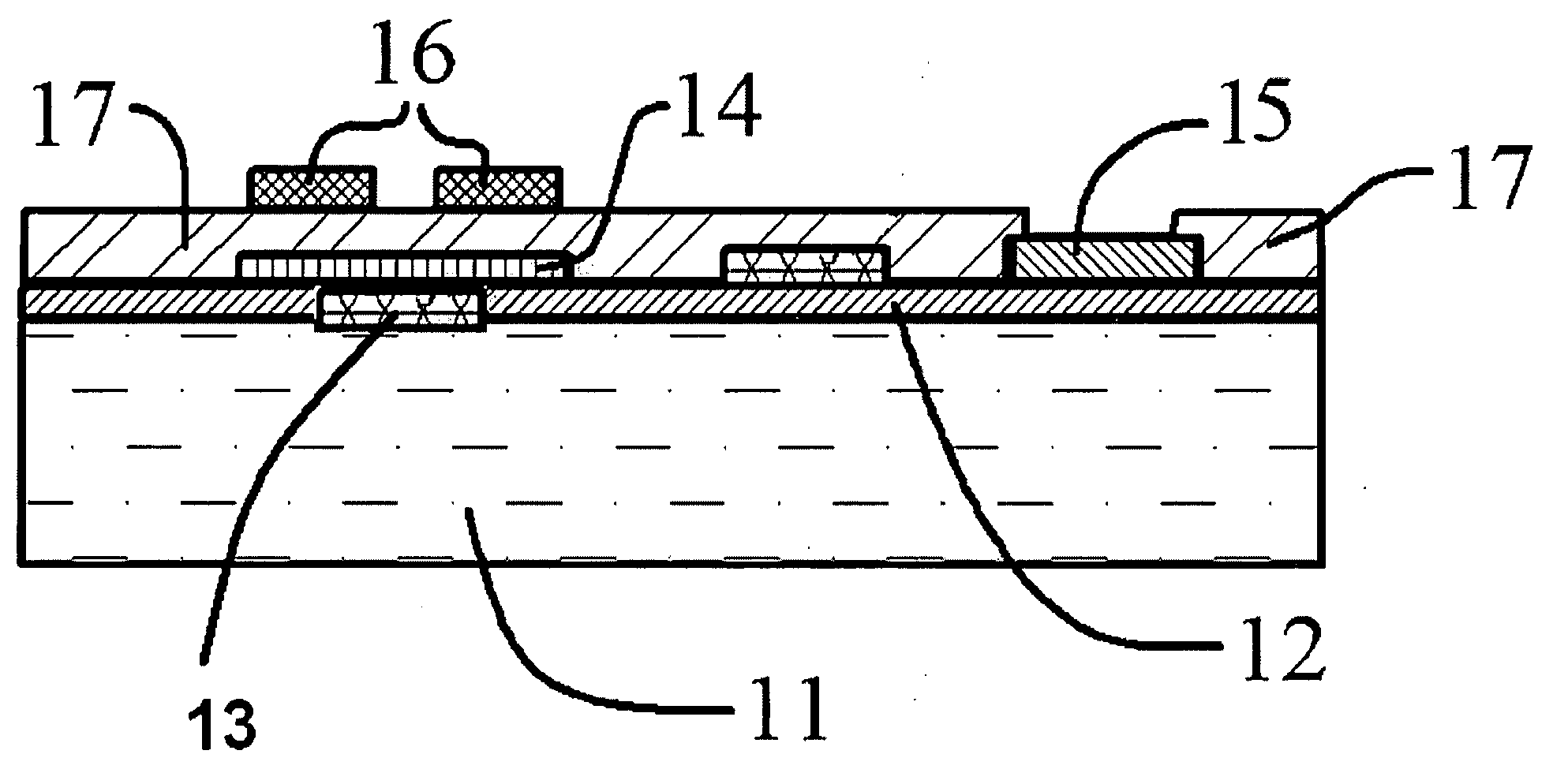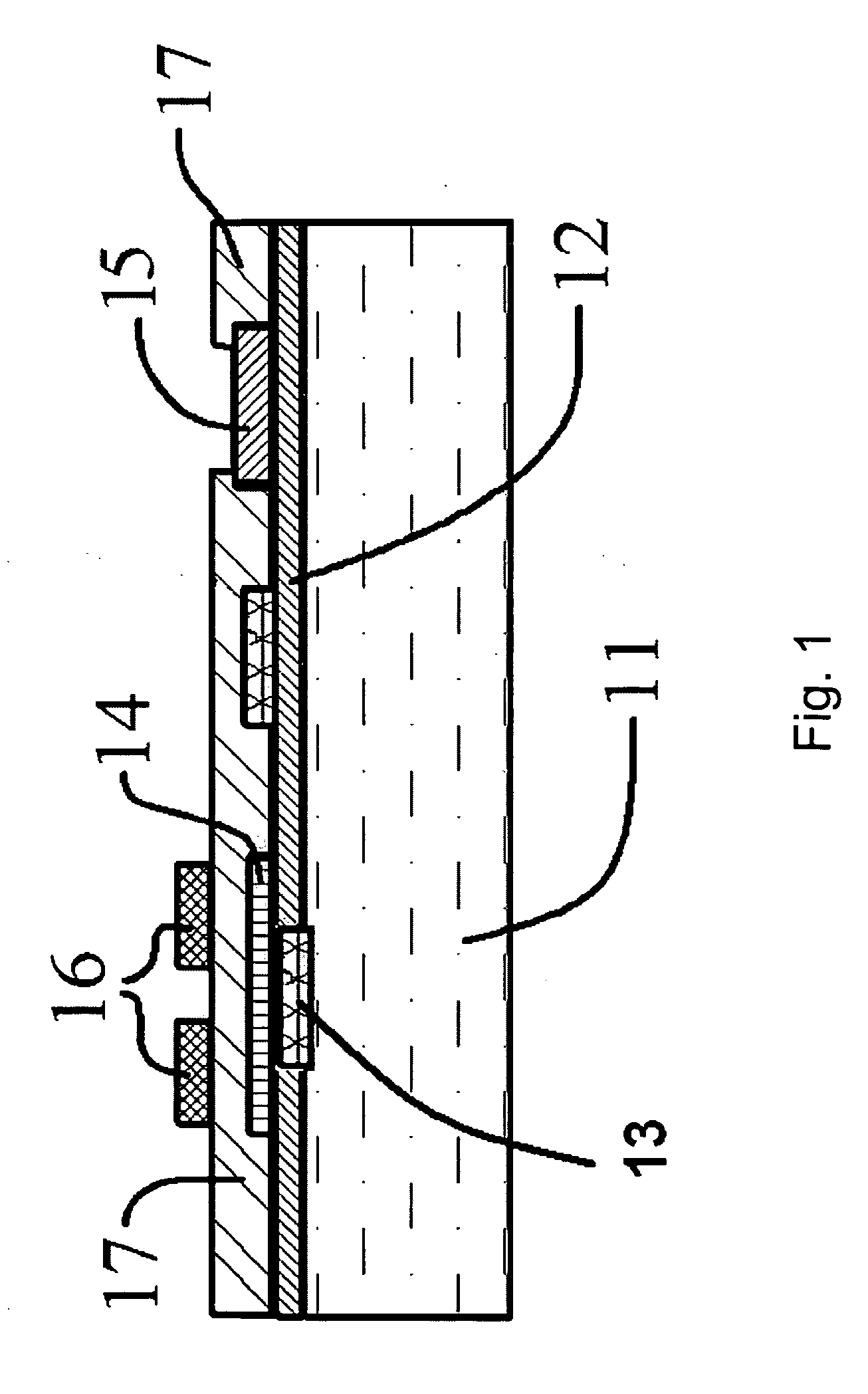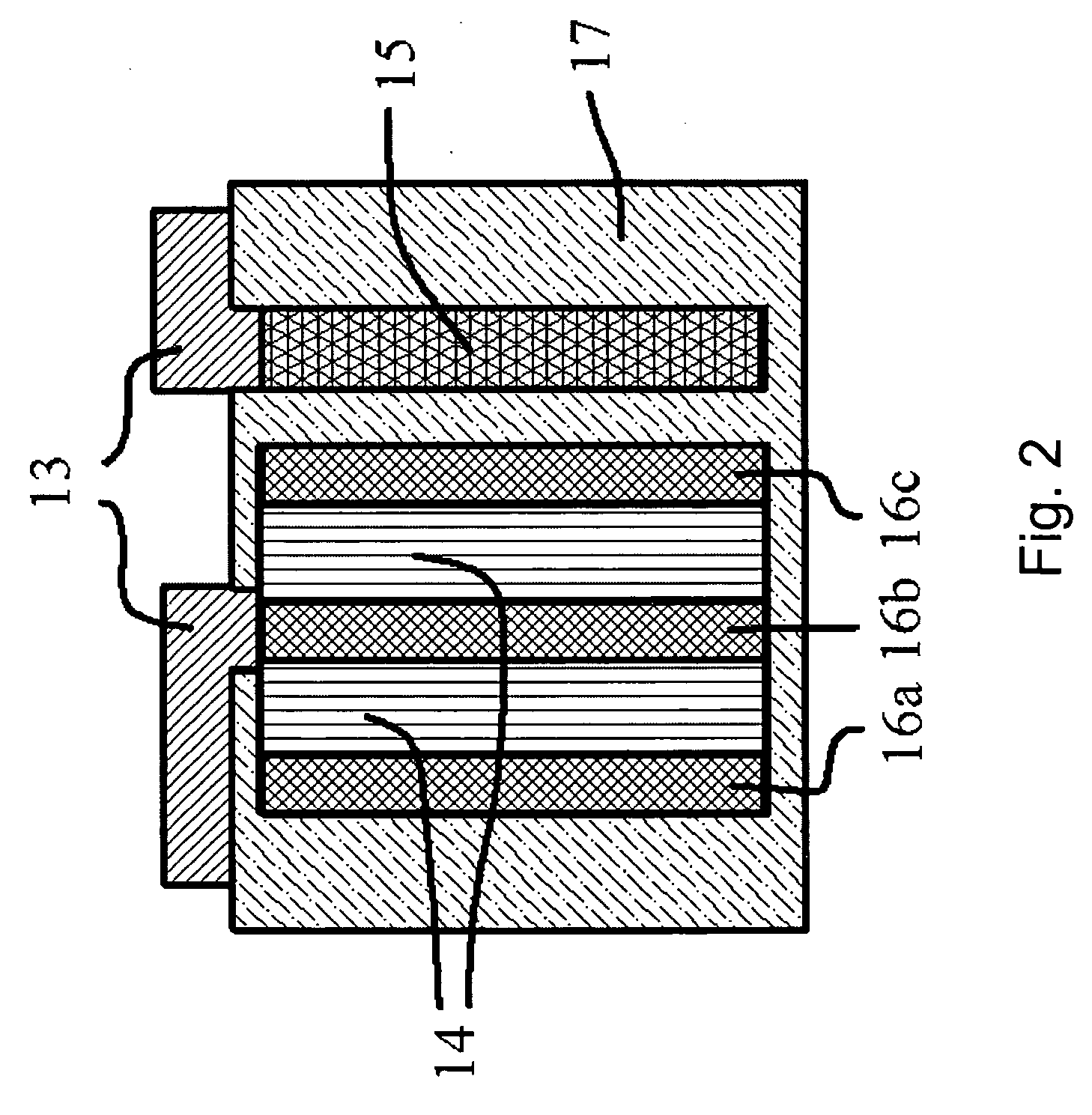Micromachined electrowetting microfluidic valve
- Summary
- Abstract
- Description
- Claims
- Application Information
AI Technical Summary
Benefits of technology
Problems solved by technology
Method used
Image
Examples
example 1
An Electrowetting Valve
[0065]An electrowetting valve can be provided with a conductive electrode under a hydrophobic patch. FIG. 1 shows a cross-sectional view of a bottom plate 1 for a micromachined microfluidic valve according to one preferred embodiment of current invention. The bottom plate comprises a first dielectric layer 12 deposited on top of the silicon substrate 11. Typically, this first dielectric layer 12 is made of silicon nitride that is deposited on the silicon substrate 11 to serve as an isolation layer from the silicon. Thin metal conducting layers including a first conducting region 14 and a second conducting region 15 can be fabricated on top of the first dielectric layer 12. The conducting regions 14 and 15 are typically made of Au, Pt, or ITO, and are deposited on top of first dielectric layer 12 using Physical Vapor Deposition (PVD) machines commonly available in semiconductor industry. The conducting regions 14 and 15 are patterned with photolithography techn...
example 2
Preferred EW Surface Designs
[0071]The layout and arrangement of conducting regions 14 and 15 can have many different configurations. For example, FIGS. 4 and 5 show optional schemes according to the preferred embodiments of present invention. The size of both electrodes 32 and 31 (associated with conductors 14 and 15, respectively), the separation between electrodes 31 and electrodes 32, and the number of electrodes 31 and 32 all can vary based on the particular application. The hydrophobic patch 16 can optionally cover the areas electrodes 31 and 32 full, or only cover a part of their areas.
[0072]According to another preferred embodiment of present invention, the conducting regions 14 and 15 can be arranged in a scheme as illustrated in FIG. 6. In this figure, the conducting region 14 is not covered by the second dielectric layer 17, and is thus exposed to a fluid flowing in such a micro-channel. To use this scheme, the conducting region 14 can act as a ground electrode when a volt...
example 3
Resetting a Valve
[0073]According to another preferred embodiment of present invention, the electrowetting valve can also be used to stop the fluid flow in the micro channel. FIGS. 8 to 10 schematically illustrate reestablishment of a flow stop condition on a hydrophobic stop gate. In this case, a third conductive region 26 can be employed, as shown in FIG. 8 to provide a second electrically conductive electrode on the surface of the microfluidic channel. In the embodiment of FIG. 8, electrolysis and gas evolution (e.g., H2 and / or O2 from water) can be achieved by applying an electric voltage across conducting regions 14 and 26, resulting in current flow when a conductive fluid traverses the capillary channel between the regions to complete the electric circuit. When an electric voltage E is applied across the conductive regions 14 and 26, with a positive lead of the electric voltage E connected to conductive region 14, as shown in FIG. 8, bubble 25 can be generated, e.g., at the int...
PUM
 Login to View More
Login to View More Abstract
Description
Claims
Application Information
 Login to View More
Login to View More - R&D
- Intellectual Property
- Life Sciences
- Materials
- Tech Scout
- Unparalleled Data Quality
- Higher Quality Content
- 60% Fewer Hallucinations
Browse by: Latest US Patents, China's latest patents, Technical Efficacy Thesaurus, Application Domain, Technology Topic, Popular Technical Reports.
© 2025 PatSnap. All rights reserved.Legal|Privacy policy|Modern Slavery Act Transparency Statement|Sitemap|About US| Contact US: help@patsnap.com



